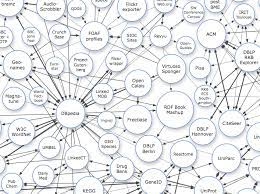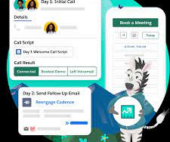The Smithsonian already embraces technology through its Open Access Initiative. ousing 2D and 3D renders of collections it provides access to over 20 museums. Enter Salesforce and Smithsonian Data Cloud.
The world’s largest network of research, museum, and education facilities, the Smithsonian Institution, manages over 150 million collections across its 21 museums, the National Zoo, and eight research centers. Navigating this vast array of artifacts can be overwhelming, even for dedicated history enthusiasts.
To enhance accessibility, the Smithsonian Institution is collaborating with cloud computing giant Salesforce. The goal is to streamline the user experience by integrating disparate data sources, such as ticketing systems and donation histories, into a unified system. This initiative aims to provide a clearer blueprint of Smithsonian’s diverse locations and offerings, according to Lori Freeman, Salesforce’s Vice President and General Manager of Nonprofit Industry Solutions and Strategy.
“Smithsonian is so progressive. They have all this content, they have all this history, they have incredible tools,” Freeman told Technical.ly. “So this technology is going to enable them to reach audiences they would never get to.”
For instance, this system will allow museum staff and volunteers to assist visitors in locating exhibits across different Smithsonian locations. Becky Kobberod, the Smithsonian’s Head of Digital Transformation, illustrated this by describing how a visitor at the Hirshhorn could ask about a piece of art at the National Museum of American History.
“It’s connecting the dots and creating a Smithsonian ecosystem that we currently don’t have. If you want to engage in our various museums, you go to each of them separately,” Kobberod said. “Whereas now, we’re providing you a front door, so to speak, that can help you navigate across all of the many different museums and resources that we have.”
Although specifics about the technology and user interface have not been disclosed, Freeman emphasized that the main objectives are to keep visitors engaged and to build lifelong relationships with both in-person and virtual visitors.
Building on Current Tech Resources
The Smithsonian’s Open Access initiative, launched in early 2020, offers 2D and 3D renderings of its collections, totaling around 5 million items to date. Users can interact with 3D images to get a 360-degree view of fossils, sculptures, and artifacts like Neil Armstrong’s spacesuit. This initiative began with 2.8 million pieces and continues to grow, said Kobberod.
In addition to Open Access, the Smithsonian has other digital initiatives. In 2022, the National Museum of African American History and Culture, in collaboration with Baltimore-based digital services firm Fearless, launched a searchable online platform to make certain collections and stories more accessible.
Kobberod noted that only about 1% of the collections are physically displayed at any given time. Digitizing and uploading these collections not only preserves them but also makes them accessible to people who might not have the means to visit in person.
“Smithsonian exists as a service to all of the American public,” she said. “We know that this is core to our future, and to making what we have available to the nation and the world.”











